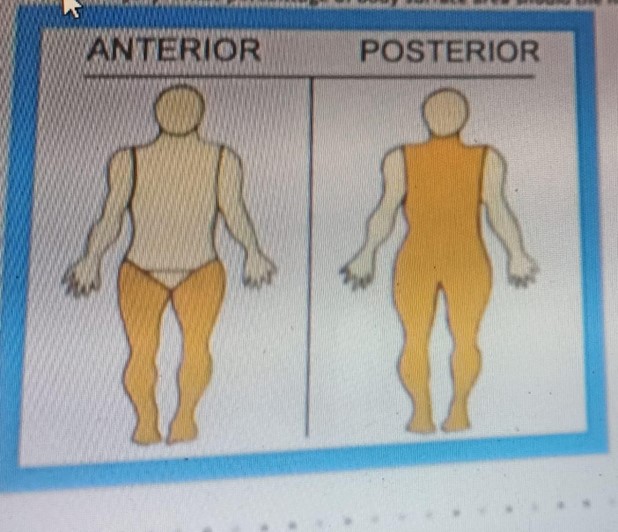A nurse is admitting a client who sustained severe burn injuries. The nurse refers to the rule of nines to determine the total body surface area of Your injury What percentage of body surface area should the nurse estimate the client has burned?

The Correct Answer is ["54"]
Rationale: This is because according to the rule of nines, the lower limbs anteriorly and posteriorly will account for 18% each, and the back accounting for 18%
So, the TBSA will be, (18+18+18) =54%
Nursing Test Bank
Naxlex Comprehensive Predictor Exams
Related Questions
Correct Answer is ["B","C","E"]
Explanation
Choice A rationale: Laser therapy is not a standard or widely recommended treatment for psoriasis and is generally reserved for research or specialized cases.
Choice B rationale: Corticosteroids are commonly used to reduce inflammation in psoriasis. They can help relieve itching, redness, and swelling associated with psoriatic lesions.
Choice C rationale: Tar preparations, such as coal tar, are another treatment option for psoriasis. They can help slow down the growth of skin cells, reduce inflammation, and alleviate scaling.
Choice D rationale: Topical antibiotics are not typically used in the treatment of psoriasis. Psoriasis is not primarily caused by a bacterial infection, and antibiotics would not address the underlying inflammatory process.
Choice E rationale: Ultraviolet (UV) light therapy, either natural sunlight or artificial UVB light, is a common treatment for psoriasis. Exposure to UV light can slow down the excessive growth of skin cells and reduce inflammation.
Correct Answer is ["31.5"]
Explanation
Rationale: the anterior chest wall and abdomen accounts for 18%, the left upper limb 9 % (4.5% anteriorly and 4.5% posteriorly), and the right upper limb 4.5% (2.25% anteriorly and 2.25% posteriorly).
(18+9+4.5) =31.5%
Whether you are a student looking to ace your exams or a practicing nurse seeking to enhance your expertise , our nursing education contents will empower you with the confidence and competence to make a difference in the lives of patients and become a respected leader in the healthcare field.
Visit Naxlex, invest in your future and unlock endless possibilities with our unparalleled nursing education contents today
Report Wrong Answer on the Current Question
Do you disagree with the answer? If yes, what is your expected answer? Explain.
Kindly be descriptive with the issue you are facing.
